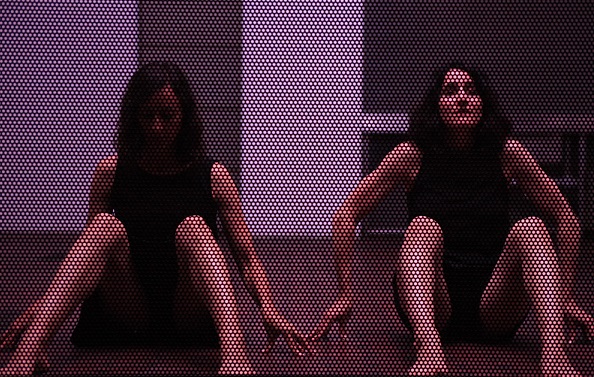The Substation, Melbourne
December 5, 2014
By Tamara Searle of Dance Informa.
Recovery is an adventurous dance work seeking to represent human coping in response to loss. Through the structure of the performance, it emphasises rituals of ceremony and stages of grieving.
Booking tickets, we are advised to wear black. This instruction commences a choreography of the audience that continues throughout the work. When we arrive, the front of house instructs us to enter the space and to stand close to the two dancers. The scale, expanse and industrial architecture of The Substation Main Hall is in stark contrast to the small, very human audience gathered. The two figures are in stillness; they wait for the audience to fully arrive before uncoiling. They take a posture, feel it out and wait for the resonances of that pose to reverberate through guests. The attitudes and shifts of weight, the nuances of each spectator’s posture are the backdrop against which the dancers’ gestures are experienced.
The dancers address us directly, lead us through spaces in The Substation, and remind us that the piece is about loss and living. At times they take us by hand, they reach out to us, they guide us down into a space, a trench (a grave?) that looks up into a larger room. We watch a dance from below through a metal mesh. This screen creates the sensation of separation and the illusion of pixilation. Our view of the dancers is limited, and this limitation is used to play with our expectations, and our sense of where their bodies are in space. In a choreography of flinches, the dancers disappear from our limited view. They reappear in unexpected places.
There is a sequence of actions: to embrace, to smash, to pace. A repetitive accented beat is echoed by each dancer. There is a juxtaposition, with one dancer stuck in a repeating rhythm, and the other in counterpoint, in an accompanying rage or grief or hope. The dancers find connections with each other through the other’s grief. In a resolutely insolent, spacious insult to death, two survivors gallivant proud and resilient to David Bowies’ Changes, boldly proclaiming themselves alive.

‘Recovery’. Photo by Rachel Roberts.
One by one the dancers invite spectators into the upper room, and we look back upon where we had been sitting in the trench. In an uncanny reversal we watch as people are released into the upper room, where they join the newly gathering audience, and we watch those still to come. We are watching from above, evoking a Christian mythology of heaven, and of the dead, of God watching over us. What makes this extraordinary is that the audience is given an embodied sense of this old Christian mythology. In one final act we are brought back up into the main space at the Substation where the work concludes.
The placement and partnering of the space at The Substation designs and frames Recovery. Structural elements, such as where the piece is located and the perspective the audience can watch it from, are very strong. Recovery is a precise work of audience as much as of the dancers. The dancers manage the guests well, without losing presence and the tension that creates the sense of being held in something. Recovery is for small audiences, it is very generous in this offering, and it joins spectators through its intimacy.
Photo (top): Recovery. Photo by Rachel Roberts.

















